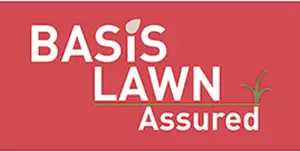If you have pets you are likely to be familiar with the problem of pet urine causing scorch patches on lawns. Most associate the problem with dog urine only but cat urine can be just as bad. It’s generally worse with female dogs because of the way they squat as opposed to the “sprinkling” technique of males.
Urine scorch is caused by two factors: nitrogen level and high pH. Nitrogen is naturally present in the urine of cats and dogs because they eat a lot of protein. When nitrogen-rich urine is applied to the lawn it dehydrates roots and turns the leaves yellow. In some cases this can kill the patch of grass. pH is also a factor. Dog urine should be around pH 6.5-7 but if it rises then the alkalinity of the urine will burn the leaves and roots.
Urine scorch is usually worse in the summer because of the sun, heat and general lack of rain. Pets can also become dehydrated making the urine even more concentrated and more dangerous to the lawn!
It’s not always simple to train a dog to urinate elsewhere (e.g. gravel path or bare soil) as many dogs just prefer to do their business on grass. So what can be done to help prevent the urine damaging the lawn you have lovingly cared for?
PREVENTION
What does work?
- Applying a jug (1-2 litres) of water to the patch where a pet has just urinated will help dilute the urine and prevent a patch appearing. This requires the customer to be a vigilant watcher and may not always become a long-term habit.
- Maintaining good moisture levels in the soil will allow the lawn to replace lost water quickly and revive itself fairly rapidly. Irrigating/watering the lawn with a sprinkler once a day may be needed, especially in the summer.
- Increasing water intake of the pet. Dogs and cats can be encouraged to drink by making water more palatable. This can be done by making a change to the type of bowl used for water or paying attention to the temperature that the dog prefers their water to be. Customers can also purchase a “pet fountain” which will filter water and encourage pets to drink from it.
- Feeding a higher quality diet to the pet will provide higher quality proteins that are easier to digest and produce less toxic urine.
- Following the feeding guidelines. Many pet owners will overfeed their pets not realising that excess protein cannot be used and will simply be excreted in the urine. Pet foods are supplied with guidelines based on breed or size and should be adhered to (unless a vet says otherwise).
What may work?
- Adding 2tbsp tomato juice, cider vinegar or similar to food. This one gives mixed results but the theory is logical; the acid in cider vinegar and the vitamin C in tomato juice help to neutralise the urine and make it less likely to scorch the lawn.
- Special rocks are available to purchase from most pet shops that claim to prevent urine from scorching. The exact way that they do this is not clear but many have given them glowing reviews so it may be worth a shot!
Doing all of the above will help prevent urine patches but that’s a lot of changes to make all at once! Every pet and home are different so suggest all of the above to your customer and let them find the right combination that will solve the problem in the long-term.
REMEDY
Unfortunately, if the scorch has already occurred there is usually no instant fix. Sometimes the lawn may be revived with watering but otherwise, the options are…
- Wait for the lawn to repair itself naturally. This should take a couple of months depending on the time of year. A nitrogen feed applied to the lawn (possibly as part of annual treatment programme) will help the lawn to thicken and repair patches faster.
- Trim out dead grass, overseed and top dress with a little soil/compost. Provide the area with plenty of water whilst new seed establishes.
This article was given to us from Daisy Lacey from Green Best Lawn Feeds
Any questions please contact me
Thanks
Jon Boon



